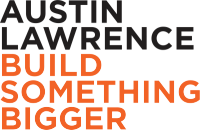Assessment and early remediation for B2B advertising that’s run off the rails
Before we get into our rubric on diagnosing what needs to be improved in a B2B ad spend, check out this situation and see if it resonates with you…
Recently, a client of ours had to prepare for a very difficult conversation with the CEO about advertising performance.
An employee with limited media buying experience was running $500k in paid search, and nearly 40 percent of the resulting sales inquiries were spam.
And that’s not all.
PPC campaigns couldn’t be optimized because of the way they were structured, with overlapping keywords and ad copy.
Making matters worse, he cloaked his performance behind behaviors that made an ordeal of managing him and the entire $1 million digital advertising budget (including paid social and programmatic, which were completely off the rails).
They got there innocently enough… As the business grew, so did the budget. A couple of missteps with outside media buying agencies led the client to move most spending in-house. But the skills required to make the most of the ad spend weren’t there, either.
Just a couple months after we were brought in, it was a different picture entirely… spam form fills were all but extinguished, cost per conversion (the current metric) is about 30 percent lower and we’re on a path to even greater outcomes by following our method, as outlined below.
Optimizing Advertising for Enterprise Software as a Service Advertisers
In part I of our two-part blog series, we’ll cover assessment and early remediation strategies to get advertising back on track. In the second post, we’ll take you past the crisis stage and start talking about optimizing conversion paths, new channels and creative, and the post-form-fill experience (aligning sales and marketing response to demand generation).
Assessment
- Is there an overarching strategy for advertising?
- What is the big idea?
- What are we trying to accomplish (and is it doable)?
- Do we know what prospects really think, and what problems they are trying to solve with solutions like ours?
- How important is it?
If this is the case, we’ll be iterating for a few months while we build insights and straighten out the media buying at the same time. If we have solid insights, have we built messaging that resonates that can serve as a well to draw from for creative?
How are we measuring success? Are the KPIs meaningful for each media type/property we’re advertising on?
LinkedIn is not as much of an “intent channel” as Google PPC (which itself is not the best place to be promoting thought leadership).
- Do we have the right people in the right seats?
- Is the team managing advertising skilled enough to get the job done?
- Is it sensibly organized or do campaigns and keywords overlap?
- Are bidding strategies tight enough to reduce spam?
- Are the campaigns being managed daily and manually, or have we taken the easy way out and adopted platform recommendations “blindly?”
- Are analytics set up so that we accurately register the outcomes in the PPC platform (and therefore train the ML on our desired KPIs)?
- Are our keywords where the action is?
- Do we have campaigns that distinctly cover search for our brand, competitors and groups of likely searches? (Campaign hierarchies make it a lot easier to figure out performance metrics.)
- Do we have retargeting and CRM audiences setup?
- Are the pixels firing correctly for the desired actions?
- Is our bidding realistic and are the placements brand safe?
- If purchased audiences are in use, are they sensible and are the goals for this category of audience realistic?
- Is our creative any good?
- Does it speak to prospect pain points (aka problems worth solving)?
- Do we have a solid CRM audience?
- Is our creative on LinkedIn being promoted at the right level? Rarely do the c-suite and those who select and drive software solutions have the same goals…so this is an easy one to dive into.
- Is our creative all linked to “buy our stuff” kind of content, or do we also promote the brand where that’s appropriate (like to the c-suite)? If we have a great CRM audience, we can be quite precise in targeting on LinkedIn, and you’d be amazed by some of the targeting errors we see here.
- Are we effectively combining LinkedIn, programmatic and email marketing to create a powerful top-of-funnel experience?
Meta (Facebook, Instagram) is probably a secondary channel for most early-stage and many scaleup B2B marketers. But exceptions abound, it should be tested for relevancy. Same holds true for TikTok. None of these platforms give us quite the targeting capabilities of LinkedIn or Programmatic, though Meta will give us about a 30-40% match rate on CRM audiences (depending on list and your emails - personal emails do much better than company emails here).
Early Remediation
Start with where the budget is largest. This is often Google ads. Here are our top 10 recommendations for quick wins in Google Ads PPC:
- Bidding should be exact or phrase match. Using broad match almost always guarantees waste. Make sure you know the difference between the match types.
- If your CTA is primarily for people to call or visit your website during business hours, ensure ads only run during these times.
- If you prefer phone inquiries, include the phone number(s) as ad extensions.
- If you are seeking conversions, use a tool like SEMrush to help you narrow keywords to those seeking information or to make a purchase.
- DO NOT use audience expansion.
- Ensure that your conversion events are being tracked in Google Ads. The machine learning needs this to improve results.
- Use negative keywords to eliminate false-positive conversions (nice tutorial here).
- Make sure that the landing page is relevant to the ads that drive traffic to it. The better the match and user experience, the higher your ad quality will be, the more it will be shown, and the more conversions you will get.
- Be REALLY careful about using PerformanceMax ads. They create a lot of impressions quickly and can drain a budget. It might pay to turn it off in the early days and figure out where the waste is in Pmax before turning it back on.
- If campaigns overlap in keywords and/or creative, you are effectively bidding against yourself. Tease out at least three types of campaigns: Brand (your company and product names), competitors (camp out on their brand search), and product specific (functional things prospective customers are searching for). This will make it a lot easier to analyze results. Don’t be afraid to stop these malformed campaigns in favor of a better and more straightforward hierarchy.
- Bonus: link to your marketing automation dashboard and a tool like DataBox so you can extract higher-level insights and start to track the impact of PPC on pipeline (not just form fills).
LinkedIn advertising is more complex than it would seem at first, but here are our top 10 recommendations for a quick tune-up of LinkedIn ads:
- Make sure each campaign targets a reasonable audience. There are a few ways to build an audience on the platform and each has its pros and cons.
- A contact targeting audience is great for ABM/ABX marketers (which many or most enterprise SaaS should be). Here you are targeting individuals that you know. If you have business emails for these people your match rate (percentage of contacts known to LinkedIn) should be very high.
- Company targeting allows you to target people by employer and demographic info like job title, groups and interests. This is helpful when your CRM audience isn’t exhaustive or you aren’t sure who all the members of a buying committee could be. It’s a little less targeted than a CRM audience but still very effective.
- Turn off audience expansion (called LinkedIn Audience Network). Just like on Google, this can yield a lot of waste, and if you’re already experiencing poor ROI, this is likely to be some low-hanging fruit, and it’s just a single click away.
- Another “in the weeds” place we’ve seen clients get tripped up is when they target groups that don’t make sense. TBH, this usually occurs when we are cleaning up from another media buying agency, which sometimes get sloppy in building audiences.
- Don’t worry about small audience sizes. While LinkedIn likes to show ads to large numbers of people, an ABM play is often about targeting 5,000 to 25,000 people. This is actually a good thing, as you can afford to show more ads to a smaller audience, letting media math work for you and not against (repetition is perhaps more important than reach, especially online where we are exposed to so many ads each day).
- Use the LinkedIn form vs driving to a landing page. And if you have SalesIntel or Zoominfo, keep the form as short as you can, as your CRM should be able to easily append all the needed information based on company email (this should be your requirement - no free emails).
- Experiment with different offers. Not every offer resonates with every audience… even if you think it should. Sometimes it’s not the audience, it’s what you’re putting in front of them. Events and thought leadership do well on LinkedIn. Dead-ahead lead generation is a lot tougher because this really isn’t a bottom-of-funnel environment. Though you may get some results, it could be relatively expensive to go for the demo here.
- Experiment with different formats. Some advertisers swear by the carousel. Others rely heavily on sponsored messages in the inbox. If you have some high-powered thought leadership, or really compelling case studies, put them in document ads and let prospects read a teaser amount right in the feed and convert them when they download the full resource.
- Make sure conversion tracking is set up properly. Like with PPC, it’s best to integrate with your analytics on Google (tag manager) and marketing automation (e.g., HubSpot) and a third-party package like Databox for deeper insights.
- If you’re not retargeting on LinkedIn, that’s a big missed opportunity. It’s a good bet that a majority of your ICP uses LinkedIn at some point each month. While you can retarget on a programmatic platform, it’s a far busier world than LinkedIn, so your retargeting ads are going to be more effective here.
- It’s easy to go too low on your budget… and the results will show it. LinkedIn is by nature more expensive than Google Ads, so you need a daily budget that lets their machine learning algorithm get to work. Too little spend and there won’t be any data to work with.
By asking yourself the right questions and implementing these early remediation tips, you can start the journey of fixing your ad spend. Our hope is that these suggestions can provide you with some relief as you work to improve your ROI from advertising.
Stay tuned for Part II of the blog, where we will tackle optimizing conversion paths, new channels and creative, and the post-form-fill experience (aligning sales and marketing response to demand generation).
If you’re still unsure where you currently stand with your advertising, taking our quick self-assessment can help you learn if it’s on the right track or running off the rails.
Or, if you’d like to dig in deeper even sooner, book an advertising discovery call with our CRO Jason Myers.






